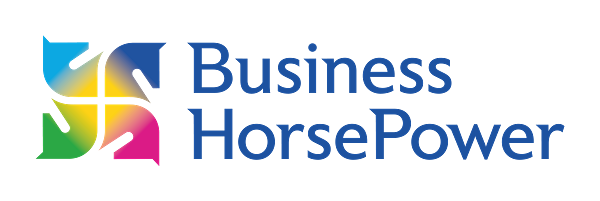As a leader of a scaling business, you know the importance of teamwork. But have you ever stopped to consider what kind of team you’re leading? In this week’s episode of the Impactful Teamwork podcast, we explore a fundamental truth that many overlook:
Not all teams are the same.
Whether you’re managing a senior leadership team or a production line crew, understanding how your team functions—and what makes it effective—is critical for unlocking high performance. In this week’s podcast episode, we unpack the five key distinctions of teams, drawn from cutting-edge research and my own insights from working with dynamic, growth-focused organisations.
Why It Matters: Team Dynamics Drive Business Outcomes
When teams are misunderstood or mismanaged, the consequences are costly—missed deadlines, miscommunication, employee disengagement and strategic drift. That’s why understanding the type of team you’re leading matters just as much as the strategy you want them to execute.
Here are five team distinctions every scaling business leader must understand.
1. Reliance: From Independent to Interdependent
The first distinction is reliance—how much your team members depend on each other to do their work.
- A sales team, for instance, may operate independently, with each member chasing their own targets.
- A product development team, by contrast, must collaborate constantly—passing ideas, feedback and deliverables between departments.
Reflection Question:
To what extent can your team members complete their work independently versus interdependently?
Leadership Tip:
Highly interdependent teams need stronger communication, trust and cohesion. Invest in building psychological safety and clarity of roles.
2. Membership Stability: From Dynamic to Stable
Does your team stay together over time, or is it constantly changing?
- A stable team (like a finance department) benefits from shared experience and collective memory.
- A dynamic team (like a flight crew or freelance project team) may be assembled and disbanded quickly, requiring rapid rapport and role clarity.
Why It Matters:
Low stability increases the risk of misalignment and slows down team performance unless strong onboarding and shared processes are in place.
Reflection Question:
What percentage of your team members were on your team six months ago—and will they still be with you six months from now?
3. Task Consistency: From Predictable to Dynamic
Are your team’s responsibilities consistent or do they change rapidly?
- A manufacturing team may perform the same tasks daily, refining efficiency and quality through repetition.
- A consulting team, however, may face new challenges every week, requiring flexibility, creativity and speed of learning.
Leadership Insight:
When tasks are inconsistent, teams need structures that encourage agility, not just process. Your leadership must provide clarity amid constant change.
Reflection Question:
Would you describe your team’s work as consistent, evolutionary or unpredictable?
4. Proximity: From Co-Located to Dispersed
Since the pandemic, proximity has become a major driver of team dynamics. Are your team members sitting together, hybrid, or fully remote?
- Co-located teams benefit from informal learning, faster decision-making and stronger culture.
- Dispersed teams require intentional connection rituals, robust digital tools and clear communication protocols.
Watch Out For:
Loss of informal learning (“learning by osmosis”), lack of visibility, and reduced team cohesion.
Reflection Question:
Where does your team sit on the proximity continuum—co-located, hybrid or fully remote?
Leadership Tip:
If your team is remote, schedule intentional time for social connection. Don’t let your team become transactional-only.
5. Similarity: From Homogeneous to Diverse Expertise
Do your team members share similar skillsets or bring varied perspectives?
- A homogeneous team (like an audit team) can operate efficiently with a shared mental model.
- A cross-functional innovation team, however, thrives on diverse backgrounds and thinking styles to spark creativity.
Why It Matters:
Similarity can streamline communication, but diversity drives innovation. Both have value—depending on your goals.
Reflection Question:
Is your team quite similar in skills and thinking, or richly diverse in expertise and perspectives?
Pro Tip:
Use tools like the GC Index to map energy and impact within your team and create a shared language for diverse collaboration.
Teams Are Not Created Equal—So Stop Leading Them That Way
The most effective leaders of scaling companies don’t treat every team the same. Instead, they tailor their approach based on where their team sits across these five continuums:
- Reliance (Independent ↔ Interdependent)
- Membership Stability (Dynamic ↔ Stable)
- Task Consistency (Variable ↔ Predictable)
- Proximity (Dispersed ↔ Co-located)
- Similarity (Diverse ↔ Homogeneous)
So here’s the million-pound question:
Where does your team fall on each of these scales—and what does that mean for how you lead?
Want to Explore This More Deeply?
🌟 Join My 20-Minute Teamship Teaching
I’ll be diving deeper into these five distinctions and how they connect to the Unbridled Teamship Roadmap on 5th June. This bite-sized session is perfect for busy leaders who want actionable strategies fast.
👉 Reserve your free spot now at www.businesshorsepower.com
📊 Take the Quiz: How to Turbocharge Your Team
Not sure where to start? Take the Team Turbocharge Quiz and discover which of the key levers your team needs most right now to create high performance.
👉 Start here: www.businesshorsepower.com/quiz
🎯 Book a Team Audit Call
Once you’ve taken the quiz, schedule a free Turbo-Charge Your Team Audit Call with me. We’ll review your results and pinpoint your next best step for building a high-performing, cohesive team that scales with your business.
Final Thought
Just as no two businesses are alike, no two teams are either. The leaders who succeed in today’s fast-paced, people-powered business world are those who understand team dynamics—and flex their leadership style accordingly.
Because in the end, teamwork isn’t one-size-fits-all. But with the right lens, it can be your most powerful asset.Teamwork is often hailed as the secret sauce of high-performing organisations, but how well do we really understand what makes a team effective? In this week’s episode of the Impactful Teamwork podcast, I tackled one of the most common yet misunderstood topics in business: the myths that surround teamwork.
If you’re a trailblazing leader of a scaling company who’s grappling with managing people and performance, this conversation is essential listening—and reading.
Show Notes
00:00 Introduction to Team Dynamics
00:54 Types of Teams: Leadership vs. Manufacturing
02:12 Factors Driving Team Effectiveness
05:21 Reliance Continuum in Teams
12:44 Membership Stability in Teams
16:36 Task Consistency in Teams
19:13 Proximity Continuum: Co-located vs. Dispersed Teams
23:20 Similarity Continuum: Expertise and Perspectives
26:52 Conclusion and Next Steps





